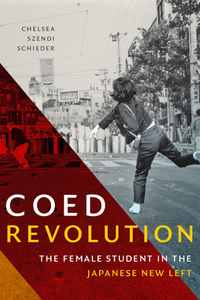Take a photo of a barcode or cover
challenging
informative
medium-paced
What a fascinating read! Szendi Schieder explores the layers of patriarchy and oppression that obscure the reality and legacy of female leadership and labor in the Japanese New Left through the 1960's. In the first two chapters, the book is anchored to Kanba Michiko and Tokoro Mitsuko, two activists who died in 1960 and 1968 respectively during protests. The book dissects their lives, ideologies, and legacies to show their relationships to the movements as well as how others, both inside and out, perceived them. Favorite chapters, without a doubt, are chapters 4 and 5 which explore the complexities of toxic masculinity within the movement and the female student activists who charged the visible frontlines. Quietly threaded throughout are the ways that the United States' internal politics, especially the Civil Rights Movement and Black liberation struggle, played into the Japanese New Left's radical politics.
Key drawback: I'm not well-versed in post-WWII Japanese history. The author provides a bit of context but certainly relies on reader knowledge. Don't let this hold you back from picking up a copy, though - instead plan on taking some extra time for side research while reading.
Key drawback: I'm not well-versed in post-WWII Japanese history. The author provides a bit of context but certainly relies on reader knowledge. Don't let this hold you back from picking up a copy, though - instead plan on taking some extra time for side research while reading.
Who was the female student in the protest movements of the 1960s in Japan? What was she protesting? Who portrayed her and how was she portrayed? What was her connection to the world around her? What is her importance in the present day?
I had so many questions after taking a university course titled "Sex in Japan." Szendi Schieder filled in my knowledge gaps way better than my cursory Wikipedia browsings could. But more importantly, her framing had me thinking about nuances and contradictions that didn't give simple answers to those above questions. As an American living in the 2020s, I want to think critically about the Black Lives Matter and Me Too movements. Coed Revolution: The Female Student in the Japanese New Left gave me more questions to approach these modern movements with.
The aspects I enjoyed most in Coed Revolution were references to events/thoughts outside of Japan and the extensive notes section. I would love to see notes or transcripts of the interviews Szendi Shieder did to help this book take shape!
Finally, here are some details that Szendi Schieder clarified for me. There are two words for the New Left in Japanese: nyuu-refuto and shinsayoku, the later invoking a tone of radicalism and violence in Japanese. Second, there's actually distinctions between Zenkyoto and Zengakuren, the former being composed of more loose affiliations. Third, right-wing extremist Mishima Yukio and the radical New Left Zenkyoto were similar in that they both "privileged masculinist violence as a response" (p. 113).
I had so many questions after taking a university course titled "Sex in Japan." Szendi Schieder filled in my knowledge gaps way better than my cursory Wikipedia browsings could. But more importantly, her framing had me thinking about nuances and contradictions that didn't give simple answers to those above questions. As an American living in the 2020s, I want to think critically about the Black Lives Matter and Me Too movements. Coed Revolution: The Female Student in the Japanese New Left gave me more questions to approach these modern movements with.
The aspects I enjoyed most in Coed Revolution were references to events/thoughts outside of Japan and the extensive notes section. I would love to see notes or transcripts of the interviews Szendi Shieder did to help this book take shape!
Finally, here are some details that Szendi Schieder clarified for me. There are two words for the New Left in Japanese: nyuu-refuto and shinsayoku, the later invoking a tone of radicalism and violence in Japanese. Second, there's actually distinctions between Zenkyoto and Zengakuren, the former being composed of more loose affiliations. Third, right-wing extremist Mishima Yukio and the radical New Left Zenkyoto were similar in that they both "privileged masculinist violence as a response" (p. 113).
Etter at jeg begynte på denne boka ser jeg ekko av det Chelsea S.S. prater om overalt i samfunnet. Ikke bare har hun skrevet ei utrolig engasjerende bok som vekker kamplyst og intellektuell nysgjerrighet, men hun har gitt meg et nytt perspektiv på både fortid og nåtid. Og dette er den første boka hennes! Jeg håper hun skriver mange flere framover!


